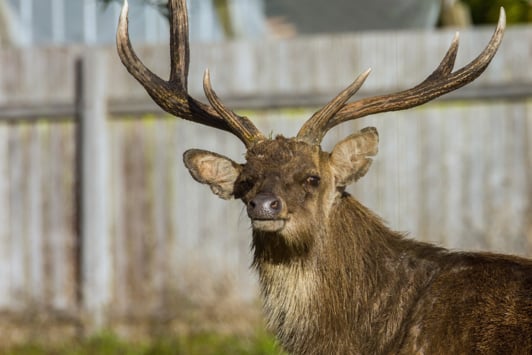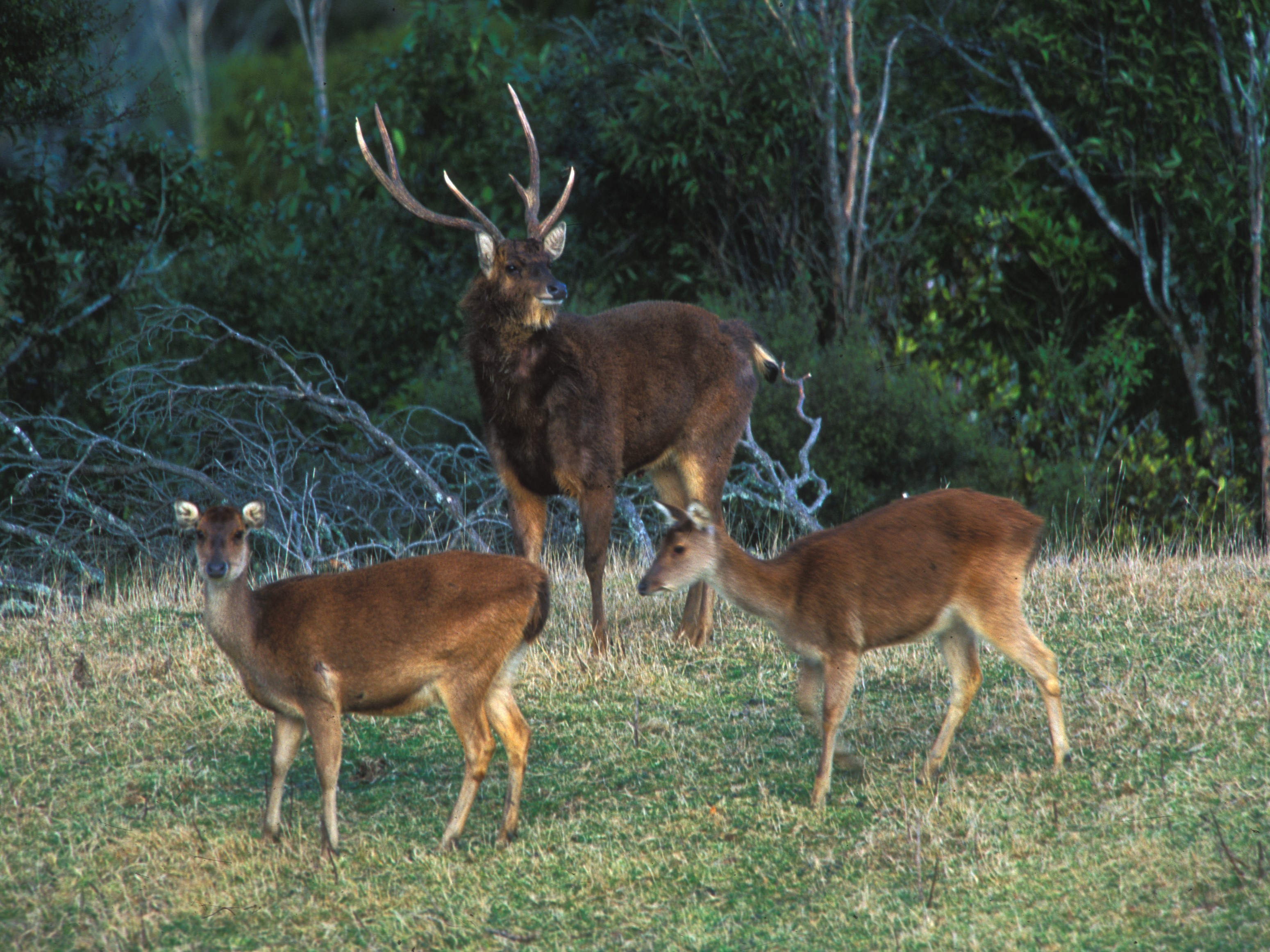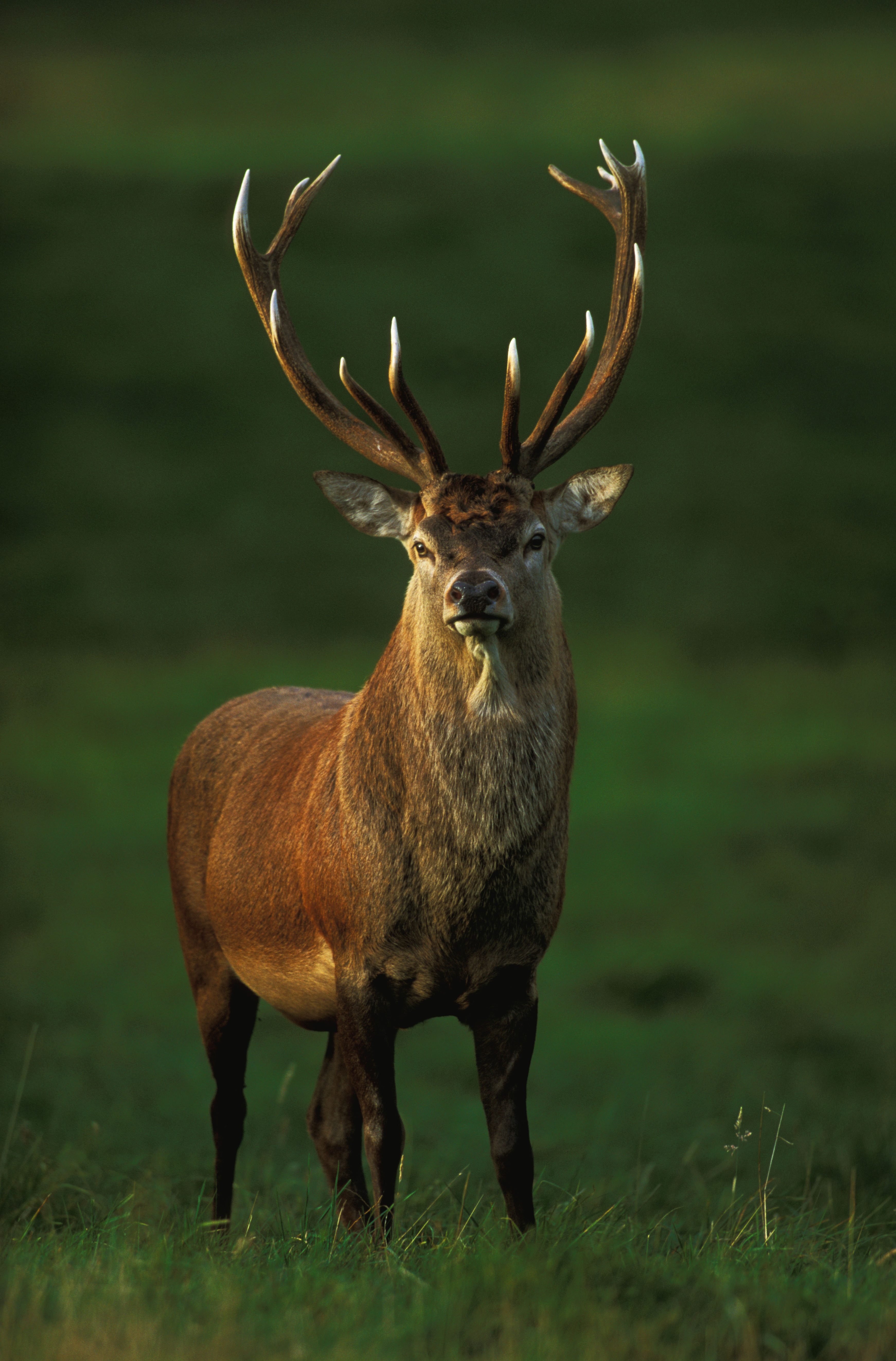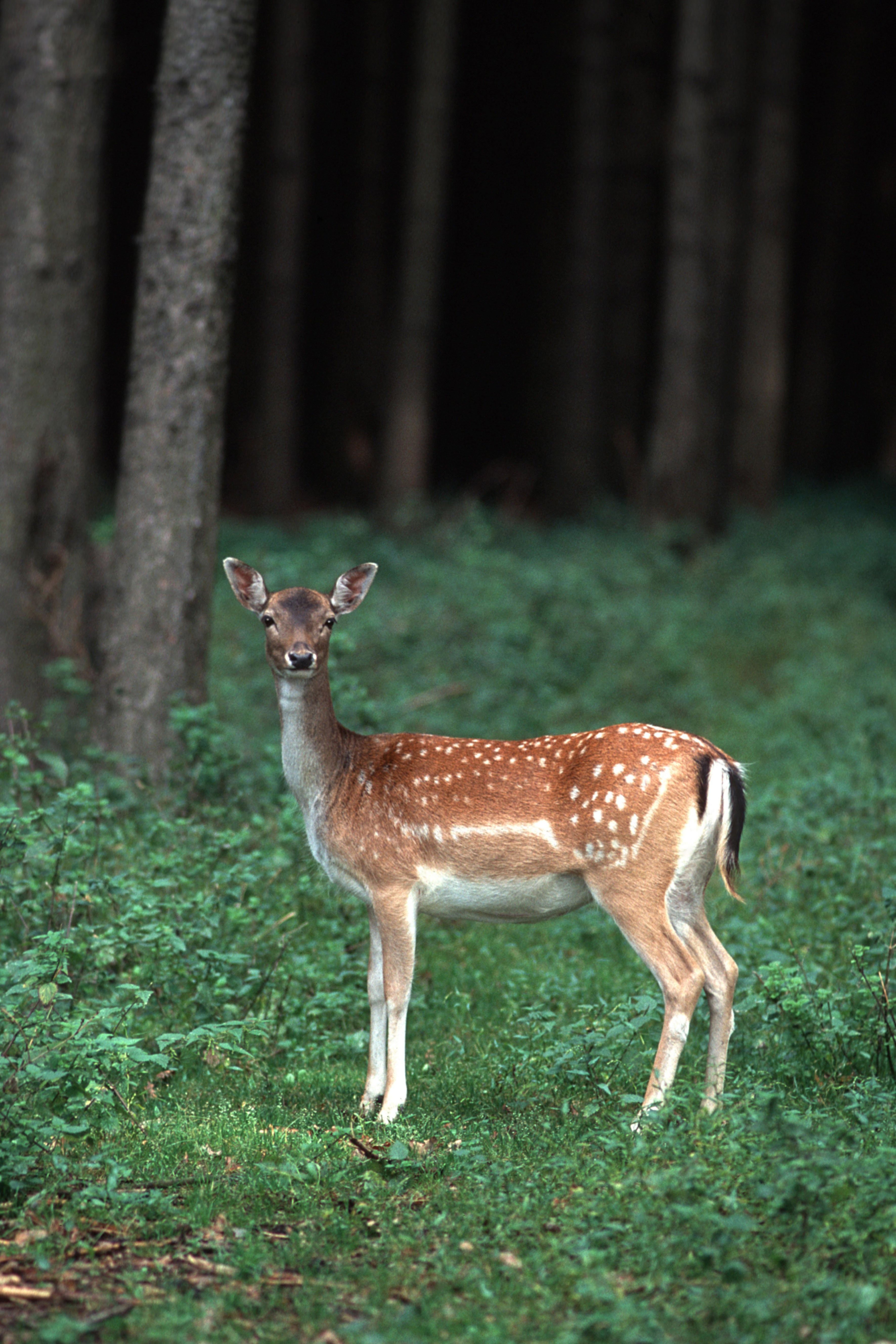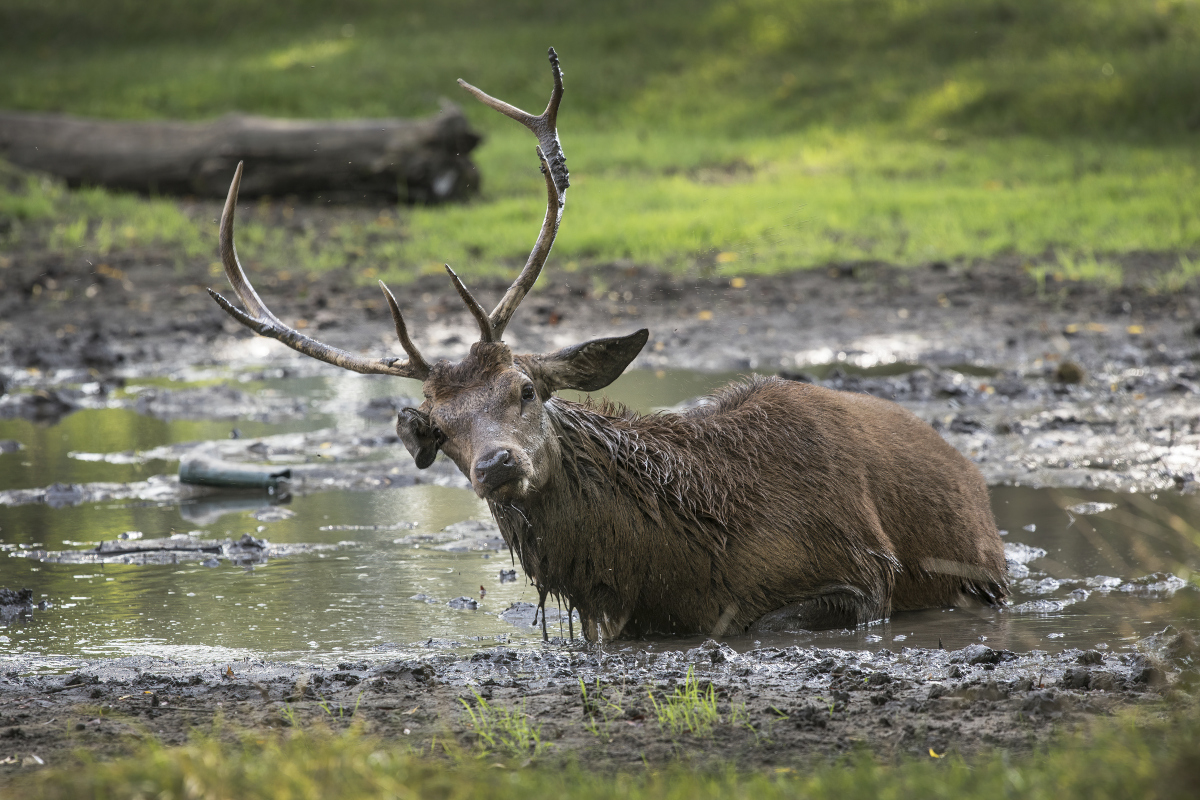
Report suspected feral deer
Report new, unusual, and suspected pest deer early so we can detect and prevent these invasive pests from establishing in WA. Report sightings to our Pest and Disease Information Service (PADIS) on +61 8 9368 3080 or email padis@dpird.wa.gov.au.
Otherwise, use our MyPestGuide Reporter app or email mypestguide@dpird.wa.gov.au.
MyPestGuide Reporter appMore information
Table 1: The 3 feral deer species that are declared in Western Australia, and identification features
|
Feature |
Rusa |
Red |
Fallow |
|
Species name |
Cervus timorensis |
Cervus elaphus |
Dama dama |
|
Image |
Photo - Rod Morris© |
Photo - Paul Brough, Alamy© |
Photo - Blinkwinkle, Alamy© |
|
Status |
Declared prohibited pest C1 |
Declared pest C3 |
Declared pest C3 |
|
Permit to keep |
Prohibited under the Biosecurity and Agriculture Management (BAM) Act 2007. |
Permitted under the Biosecurity and Agriculture Management (BAM) Regulations 2013 for farming, zoological displays and educational purposes. See Requirements to keep section on this page. |
Permitted under the BAM Regulations for farming, zoological displays and educational purposes. See Requirements to keep section on this page. |
|
Native to Australia |
No |
No |
No |
|
Male |
Weight: 80 to 140 kg
|
Weight: 135 to 160 kg
|
Weight: 50 to 100 kg
|
|
Female |
Weight: 50 to 75 kg |
Weight: 65 to 100 kg |
Weight: 35 to 55 kg |
|
Coat |
Summer coat is sparse and reddish-brown, darker on the rump, lighter on the chest and white around the chin and throat area. In winter, the coat is greyer in colour and thicker. Tail is long and brown. Fawns do not have spots and are reddish-tan in colour with white underparts. |
Summer coat is reddish with a distinctive light-coloured patch on the rump. In winter, the coat is slightly greyish-brown in colour. Fawns often have white spots that fade as they mature. |
Highly variable in colour including red, black, white and menil (spotted). Heart shaped pale rump patch with black outline and a long tail. |
|
Habits |
Rusa deer are herbivores that graze a wide range of grasses, shrubs and trees. They often form large groups. |
Red deer are found in open forest and woodlands with grassy understoreys. They often feed in pastures and crops. Red deer often form large groups. |
Fallow deer inhabit semi-open scrubland, grazing graze on pasture that is near cover. |
|
Breeding |
Mate between June and August. Fawns are born between March and April. Male rusa deer often decorate their antlers with twigs and grass during the breeding season. They can hybridise with red deer, but only produce fertile female offspring. |
Mate from March to April. Fawns are born in December. Males are only territorial during mating season and roar to attract receptive females. |
Mate from April to May Fawns are born in December. Bucks make an unmistakable croak, like a grunting pig. Calls vary from high pitched bleating to deep grunts. |
Feral deer cost tens of millions of dollars each year through agricultural losses (grazing industries), and expenditure on their management and research.
The impacts of feral deer increase as their density increases. This means proactive control is the most effective method of avoiding the damage they cause. Feral deer can:
- change the natural landscape by grazing and browsing plants
- compete with native fauna for food and habitat resources
- damage pasture, commercial crops, orchards and infrastructure
- compete with livestock
- impact water quality, soil properties and nutrient cycling (Davis et al. 2016).
- act as vectors for disease and pathogens, including foot-and-mouth disease.
They can also transmit exotic livestock diseases such as Trypanasoma evansi to cattle, sheep, and goats (this disease is fatal to dogs, cats, and horses).
Feral deer are a public health risk, causing motor vehicle accidents, and have been known to carry diseases that can be transmitted to humans, such as leptospirosis and bovine tuberculosis.
It is important to control feral deer to prevent their spread and reduce their impact. Shooting and trapping can be effective control measures, if conducted as part of a coordinated program.
For more information about the control options available, see the Glovebox guide to managing feral deer.
-
Glovebox guide to managing feral deer
|
Area |
Species |
Location |
|
South coast population |
Red and fallow deer |
Esperance and Hopetoun area |
|
Northern population |
Red and fallow deer |
Geraldton, Northampton, Chapman Valley, and Greenough areas |
|
South-west population |
Red and fallow deer |
Agricultural and forested land from Gingin and the Perth Hills, through the Peel, Harvey, Collie, Donnybrook and Margaret River regions, south to Manjimup and Denmark |
|
Rusa deer |
Harvey area |
Feral deer graze and browse on a range of pasture, crop, and native species. They regularly compete with livestock for grazing on farmland. However, many feral deer species stand on their hindlegs to browse trees, as well as eating litterfall.
Fallow deer consume more grasses than red deer. Recent analysis has indicated that adult fallow deer can consume 1.85 dry-sheep equivalent. Red and rusa deer are larger in size than fallow deer and are likely to consume more grass.
The Western Australian Organism List (WAOL) contains information on the area(s) in which these feral pests are declared and the control and keeping categories to which they have been assigned in Western Australia. Search the respective deer by their scientific species names, written in italics on this page.
For information on the requirements for keeping fallow and red deer species in WA, see the Fallow and red deer - requirements to keep Factsheet.
-
Fallow and red deer: requirements to keep
Aerial feral deer control program
Deer are declared pests in WA, and land managers are responsible for controlling them on their properties. However, there are limited control methods available for managing feral deer.
Feral deer are becoming one of Australia’s most damaging vertebrate pests, with their populations rapidly expanding in many parts of the country.
There is an opportunity in WA for DPIRD to target several known populations of feral deer to reduce numbers to manageable levels, using contemporary and innovative techniques.
In 2025, we will be implementing thermally-assisted aerial control to reduce deer populations. This method is highly effective, particularly in low-density populations. It is the preferrable control option to control feral deer, while maintaining high standards of animal welfare.
Control of pest populations is most difficult, but most effective when populations are small, such as deer in WA. DPIRD aims to test, refine and develop tools tailored to suit WA conditions.
More information regarding our aerial feral deer control program is available in the Frequently Asked Questions document and 'feral deer control in WA brochure' below. The FAQ is updated regularly throughout the year.
-
Aerial feral deer control FAQpdf (815 KB)
-
Feral deer control in WA brochurepdf (1.19 MB)
The following map provides a general indication of the location of feral deer in WA, based upon confirmed reports.
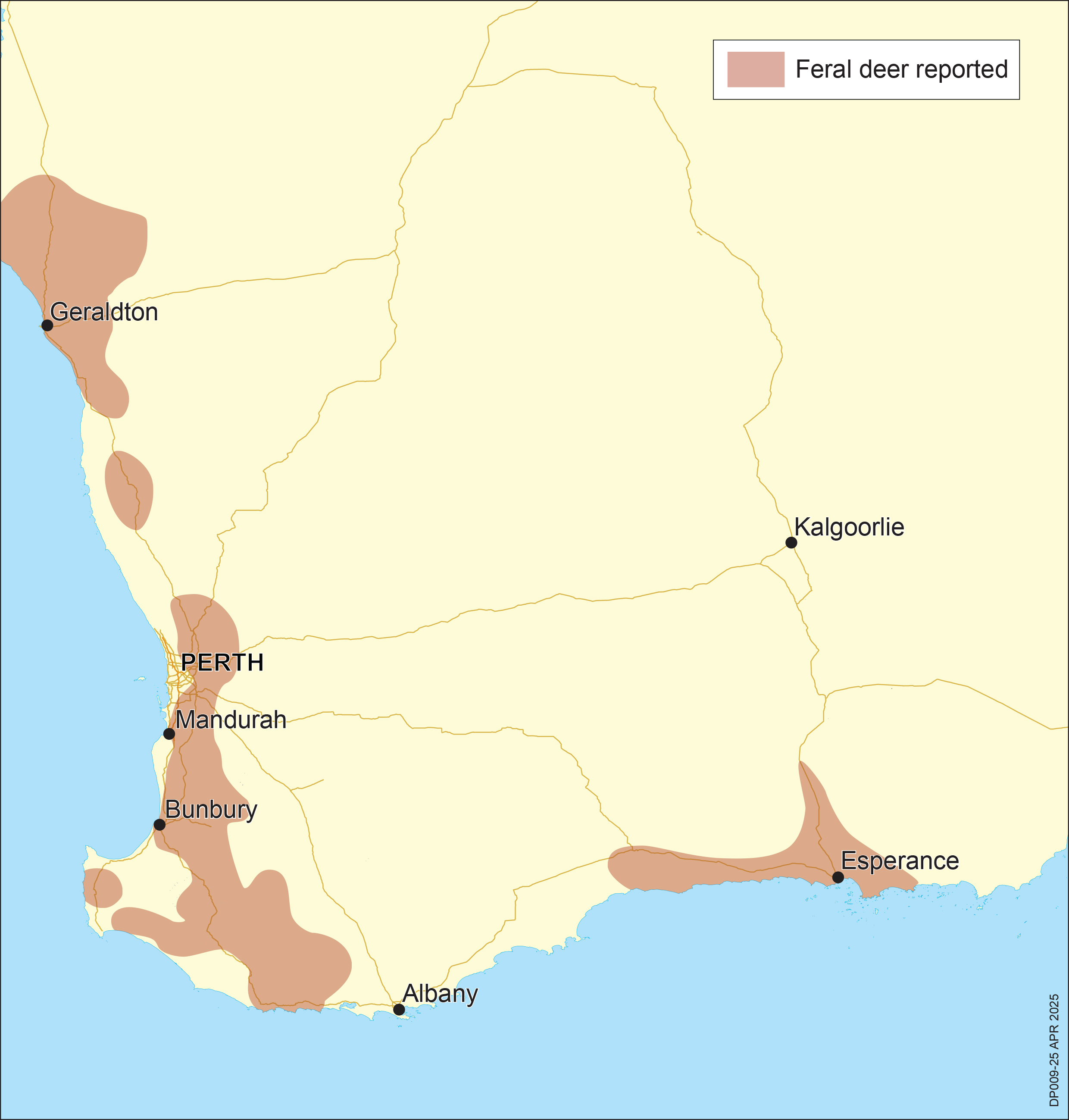
For more information about the program, read the latest updates below.
Documents
-
Aerial feral deer control FAQpdf (815 KB)
-
Feral deer control in WA brochurepdf (1.19 MB)
-
Rusa deer: animal pest alertpdf (717 KB)
-
Feral deer control update - round 1pdf (632 KB)
Related content
- Fallow and red deer - requirements to keep Factsheet
- Invasive species permits, applications and fees
- Declared pests
- Western Australian Organism List (WAOL)
- Glovebox guide to managing feral deer | Centre for Invasive Species Solutions (invasives.com.au)
- Department of Biodiversity, Conservation and Attractions (dbca.wa.gov.au)
Contact Us
-
Feral deer control team

